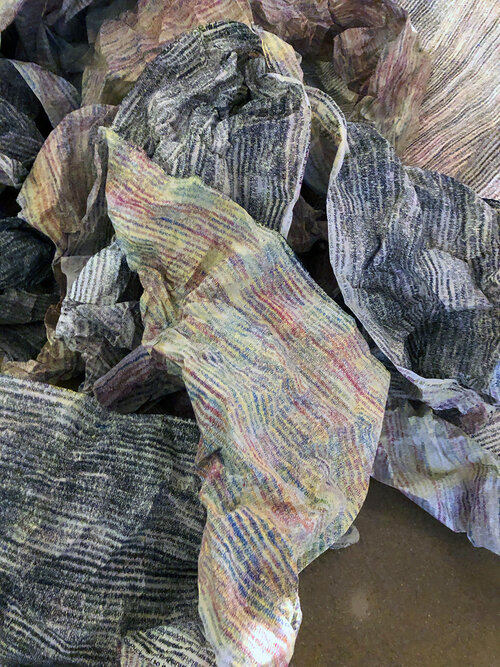Screenprint Biennial 2020
Written from day 60 of quarantine, early in the days of the pandemic:
I can’t really write about this year’s Screenprint Biennial without adding in some background information. I’m in my makeshift basement home studio writing this essay, because my wife is in her small upstairs office having an online departmental meeting, and my 12-year old son is in the other room having internet school. Like everyone else in the country, we’ve been on lockdown, relatively lucky that no one in our house is:
Sick
A toddler
For this 4th Screenprint Biennial, a team of jurors selected the artworks that make up this exhibition. The jury pool included artist and printmaking professor Althea Murphy-Price, print scholar, writer, and curator Christina Weyl, master printer and printmaking instructor Luther Davis, and myself. We worked to put together a diverse, exciting, and challenging exhibition bringing together a fusion of color, expression, ideas, and innovation.
The biennial exhibit highlights innovation with works like Justin Diggle’s laser-engraved screenprints. By building up layers of screenprint ink and excavating it with a laser, he is able to create his Dada-like surveillance creatures. Building upon this surveillance narrative, Dana Potter mines the facial-recognition of our online systems for imagery that starts digital and becomes very physical through intensive ink layering and flocking (dusting a wet ink layer with a colored powder to add dimension to the print). Artist Yoni Asega pushes technical innovation in another direction, creating a piece using thermochromic ink (ink that changes color when you touch it) to create his “Certain Blacks,” exploring blackness in contemporary African American culture.
Conceptual ideas, from the personal to the political, pervade the exhibit. Robert Tillman’s brilliant over-the-top ode to the 1968 French student protest posters makes the case for screenprinted communication, then and now. In a similar vein, Ruthann Godellei’s “Bunting” uses vocal satire to call attention to attitudes and ideas damaging the social fabric of our communities. Other pieces in the exhibit work on a quieter level, like Arron Foster’s lyrical cyanotype/screenprint landscape, evoking a message of conservation, or Nicolas Ruth’s masterful “Watch This Space” series, in which he creates a personal vocabulary of signs and signifiers dotting a delicate, textured landscape.
A number of artists in the show create mind-blowing visual experiences. Both Travis Janssen and Robert Howsare work the line between geometrics and moiré to create psychedelic, illusionary playgrounds. The masterful work of Ann Aspinwall balances the same kind of hyper-dense mark-making with calming landscape-like fields, a perfect optical frission. Both Ayshia Taskin and Sophia Isaak take the gestural possibilities of screenprint to new levels, the former folding screenprint imagery into trippy animation, the latter adding in sculptural elements to compliment her patterned, biomorphic world.
There are scores of other amazing art works in the exhibit that use screenprinting to make us think and feel. They act as both a timestamp of what artists were thinking about before the pandemic, and act as a map moving forward to show us the state of the art in the years to come.
Nathan Meltz
Founder, Screenprint Biennial
Postscript: Due to the length of pandemic ramifications, the exhibition was transitioned to an online exhibit, hosting in the spring of 2021.
Insecurity Collective, Installation (36 modular rolls of Japanese paper), Each roll is 15"x25', 2019-2020
Insecurity Collective (Detail), Installation (36 modular rolls of Japanese paper), Each roll is 15"x25', 2019-2020


